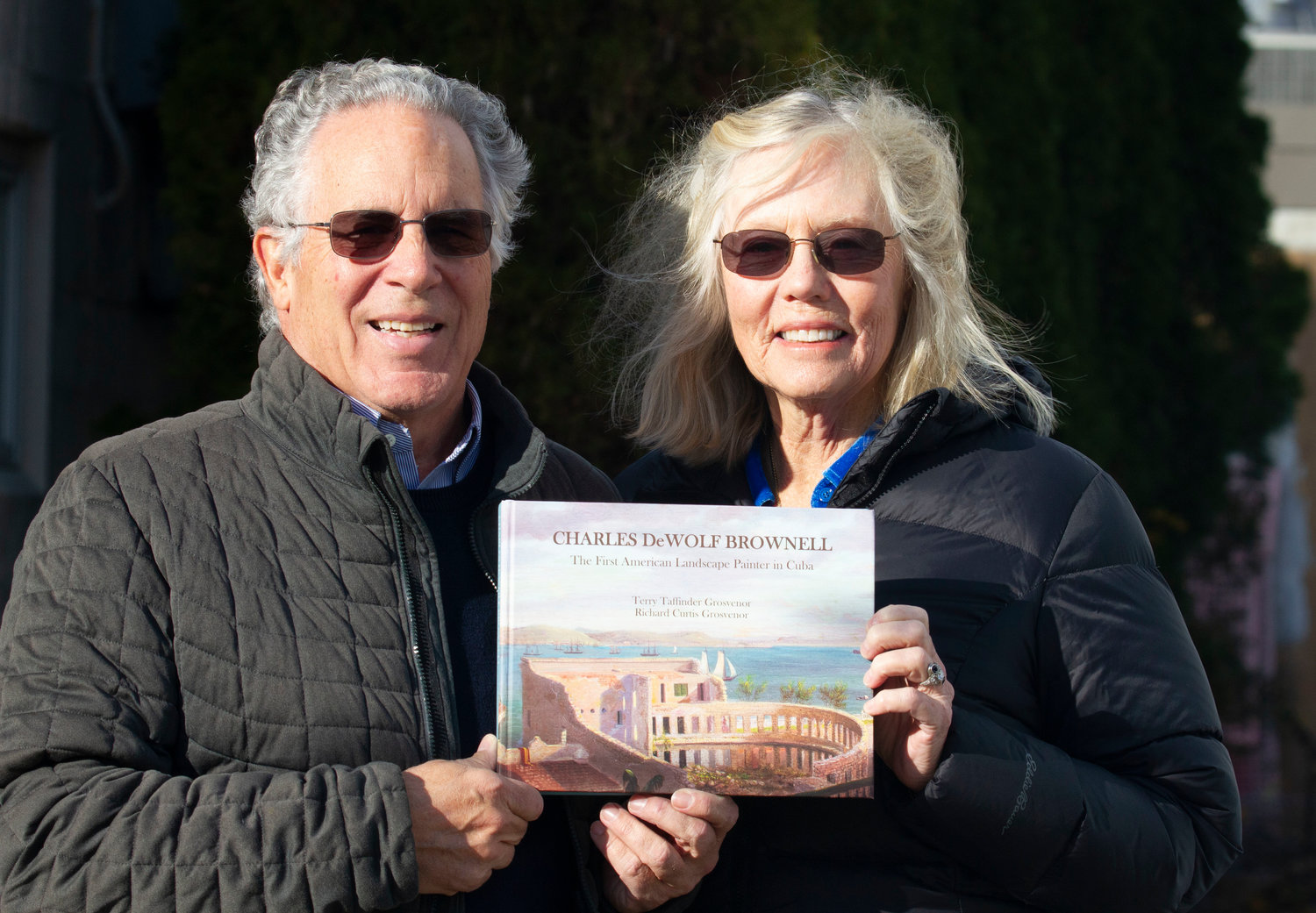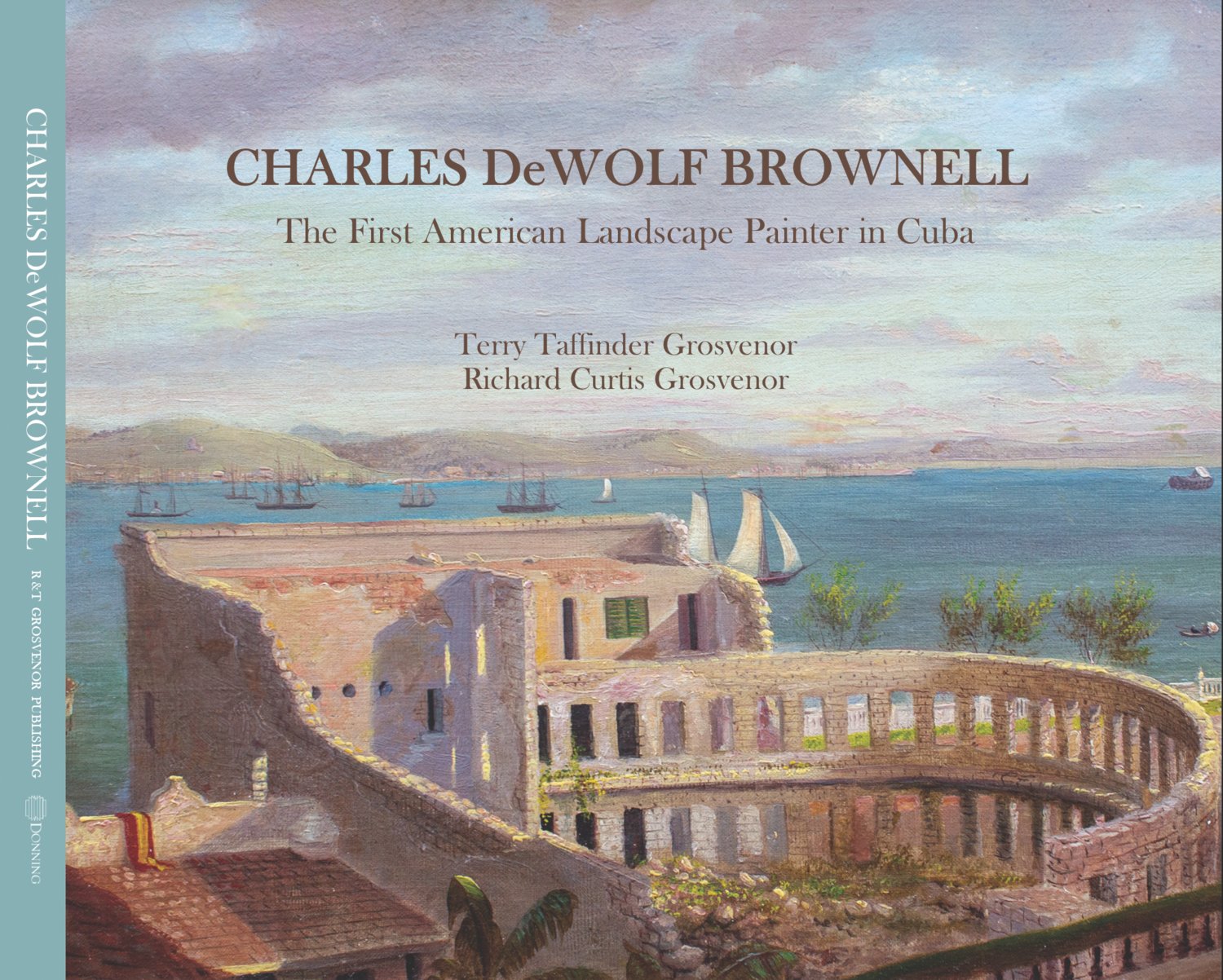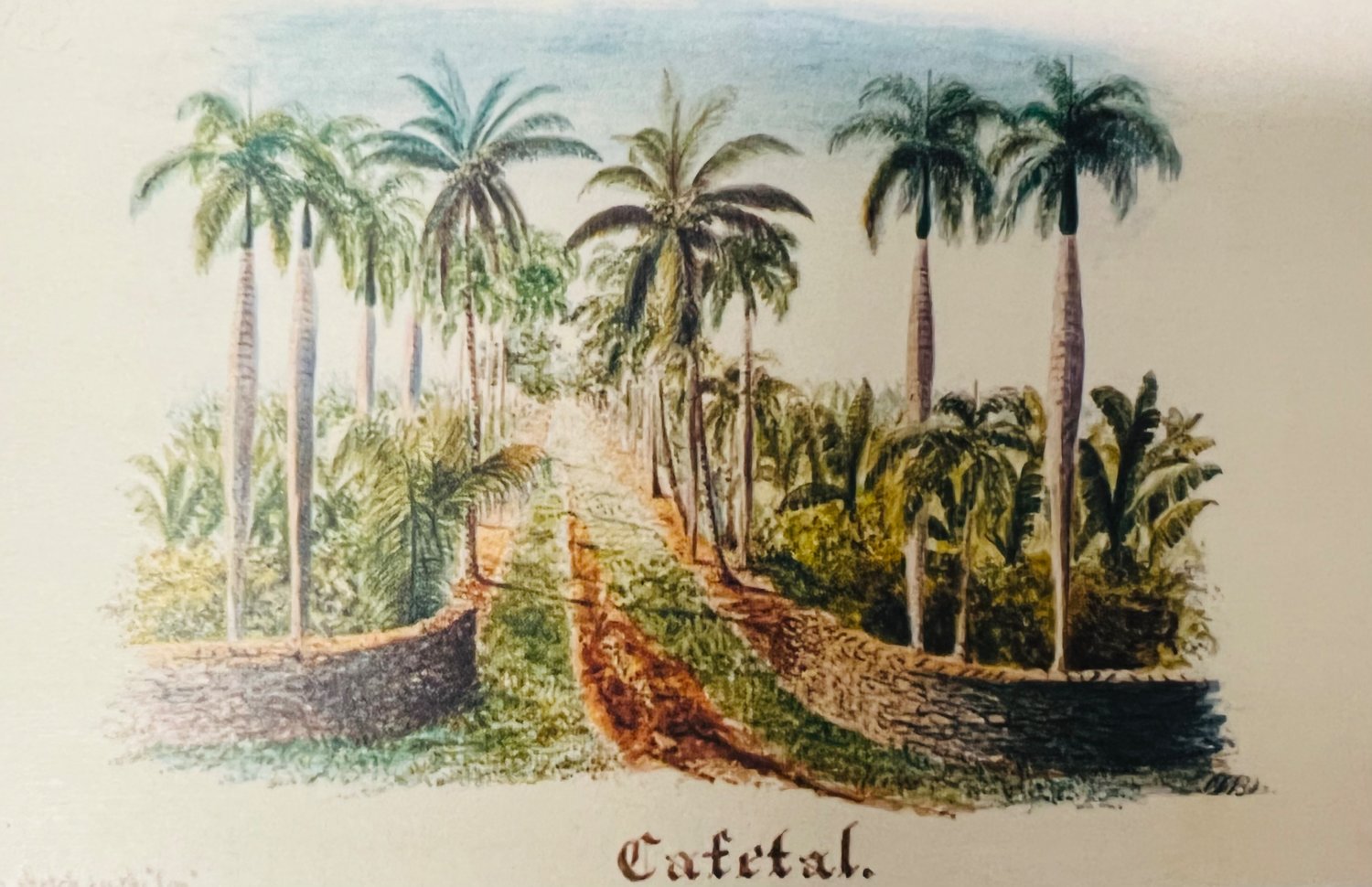You may not know of this DeWolf — but you should
Charles DeWolf Brownell was a multi-talented 19th-century artist. His first-person accounts and sketches from trips to Cuba are explored in a new book, written by one of his descendants.
This item is available in full to subscribers.
Please log in to continue |
Register to post eventsIf you'd like to post an event to our calendar, you can create a free account by clicking here. Note that free accounts do not have access to our subscriber-only content. |
Day pass subscribers
Are you a day pass subscriber who needs to log in? Click here to continue.
You may not know of this DeWolf — but you should
The date is Oct. 17, 1853. Charles DeWolf Brownell — yes, the same DeWolf lineage you’re thinking of, but more on that later — is aboard a ship bound for Cuba. He is 31 years old, and is excited to find out what waits for him in this distant land, which is far from his native Rhode Island. He records memorable moments in his journal throughout the voyage.
“Regular hurricane weather, sea, and clouds,” he writes. “Several seas broke heavily aboard. By far the heaviest weather that I have experienced. Blue sky breaking through the most threatening clouds — masses of them moving confusedly in every direction. The evening was magnificent. Moon about full…a warm gale, with wildest and most picturesque seas and sky conceivable. In the west was a beautifully defined lunar rainbow, the first that I had ever seen…Altogether, the day was the most remarkable of any since our departure.”
It is just one of many first-person glances into an exciting chapter of Brownell’s life — scenes that inspired one of his descendants to transcribe his diaries full of firsthand accounts and masterful artwork into a new book, ‘Charles DeWolf Brownell, the First American Landscape Painter in Cuba’, which is now available for purchase.
“I love art, I love history. I always have, and I think I wanted to document it for posterity,” said Terry Taffinder Grosvenor, Brownell’s great, great granddaughter, who inherited his journals and sketchbooks from his trips to Cuba between 1853 and 1860.
Terry — who had heard stories of Brownell from her grandmother and great aunt about Brownell’s travels, which he would regale them with while strumming a guitar — became enamored with her ancestor’s works of art when she visited a gallery featuring some of his pieces right here in Bristol in 1965. The artist would eventually reside in and come to love Bristol during the latter half of his life.
“There was an exhibit here, actually, at Linden Place in the art museum,” she said. “It was Brownell's work and it's the first time I had seen the whole collection. I loved the work. I thought it was stunning, and I saw such variety in his different landscapes.”
Brownell’s work has since been included alongside some of the most prominent artists in some of the most renowned art spaces in the country, including the Metropolitan Museum of Art, the Boston Museum of Fine Arts, the Smithsonian Museum, and the Wadsworth Atheneum, among many others. Still, details of Brownell’s life and his work have remained relatively unknown to the public at large.
“My intent is to present Brownell — the artist and the man — as best I can to give the reader a better sense of his personal life,” Terry writes in the book’s preface.
The book is available for purchase on Amazon and in physical hard copies at the Linden Place gift shop, or by visiting the authors’ website at CharlesDeWolfBrownell.com.
A one-of-a-kind, illustrated tour through history
The book, which Terry self-published and co-authored with her husband, Richard “Rick” Curtis Grosvenor, is a legitimate achievement in its presentation, quality, and content.
Terry painstakingly transcribed the handwritten journals, which catalogued everything happening in the day-to-day life of Brownell during his winter excursions to Cuba, where the tropical air provided relief for his troubled lungs. Among the pages, along with his written accounts, are hundreds of drawings, freezing forever in time everything from local fauna and flora, to the people and proceedings of mid-19th-century Cuba.
“These are massive notebooks of sort of daily sketches,” Rick said. “Terry worked through all the written diaries and transcribed them and combined them so as you read through the book, it’s an illustrated travel through Cuba in the 19th century. And that’s what makes it so fascinating.”
As demonstrated in the opening of this story, the diaries seem as though they could have been written by someone today, which adds to the intrigue and page-turning attraction to the work.
“The nice thing is that his narrative is very readable,” Rick continued. “He speaks in almost a modern way so that you feel that the tour you're getting through Cuba in the mid-19th century is is immediate. You don't feel that there's this sheen of age, even though we're talking about something that happened almost a couple hundred years ago.”
A truly joint venture that started in earnest amidst the doldrum lockdowns of Covid-19, Rick utilized a photography background to shoot high-resolution photos of the hand drawings by placing the pages on non-reflective glass and suspending a camera directly above them. Through a combination of historical accuracy, technical skill and finesse in the publishing, and the clear love that emanates from the work as a result of a familial connection that bridges many generations, the result is something truly unique and authentic.
“I had a certain amount of expertise and she had a lot of love of art and history and all this ancestral background, so to put it together for the two of us was a real treat,” Rick said. “It was a real joy to work together and come up with a product that we’re very pleased with.”
More about Brownell
Born in Providence on a parcel of land that is now covered up by the notorious Superman Building, Charles DeWolf Brownell was the third son of Pardon and Lucia Emilia Brownell in 1822. Related to the notorious DeWolf dynasty through his mother’s side, Brownell would only adopt the moniker into his middle name following the deaths of his oldest brother and younger sister, who each utilized DeWolf as a middle name and succumbed to scarlet fever when they were 15.
But before you make any immediate judgments about Brownell’s path to adventuring and chronicling coffee plantations tended to by slaves in 1800s Cuba, Terry wants to make sure the record is clear on the difference between the Brownell family and the DeWolfs.
“The Brownells were abolitionists, and it’s very important for people to know that,” she said. Indeed, a poem scribed by Brownell is included in the book that denounces the plight of enslaved workers amidst an otherwise picturesque scene in a field in Cuba in 1854.
“But ah the charm has left the scene, as looking round we scan/
The heavy wrongs still wrought between man and his fellow man,” a portion of the poem reads.
Brownell spent much of his life living in Connecticut, before settling in Bristol following his marriage to Henrietta Knowlton Angell Brownell in 1865, where he spent the last portion of his life, eventually dying in 1909.
Much, much more about Brownell’s life can be explored in the book that can’t be delved into here. And so much more is to be discovered and written about that Terry is already thinking about her next literary venture.
“I’m doing a biography next on Brownell,” she said. “I can’t stop.”











